Main Body
Visual Rhetoric In Practice
Review the slides below that demonstrate completed examples for the Slide Construction assignment.
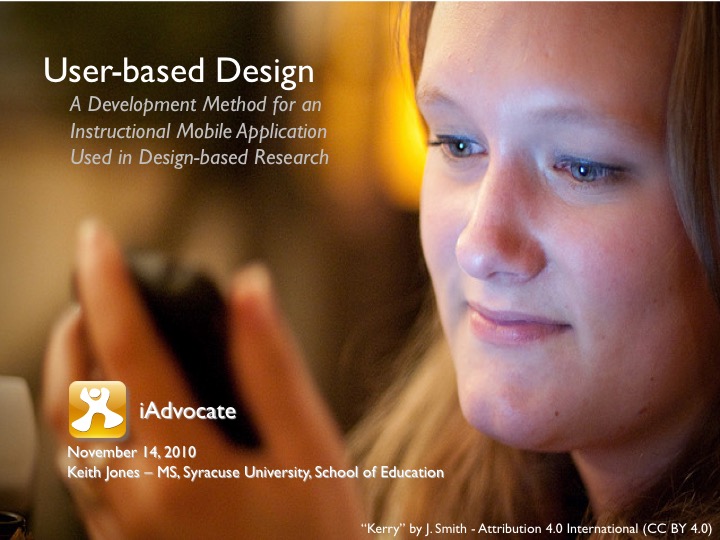
- What is the context, audience, and purpose of the overall presentation? Context: Business meeting on product development. Audience: Mobile app developers about an alternative method for data organization. Purpose: Persuade developers that a User-based Design method will produce greater user satisfaction.
- What is the singular message in this one slide? “My method will make users happy with the product”
- What is the rhetorical strategy you are employing in the visual element? The use of “Kerry” in this slide is intended to produce an emotional feeling in the audience that suggests that the intended user of this product will be happy with the way it works. She is looking at her phone with a positive expression. The warm colors and lighting reinforce this feeling.
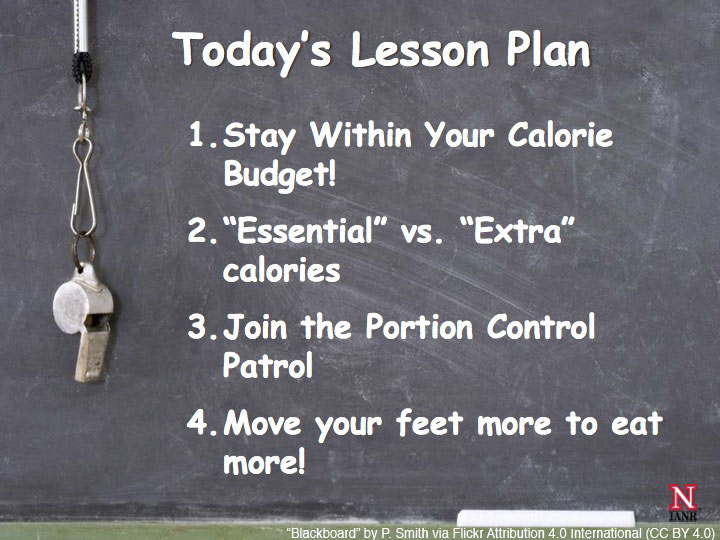
- What is the context, audience, and purpose of the overall presentation? Context: In-school health class presentation. Audience: Junior high and high school age teens. Purpose: Inform teens about healthy eating habits.
- What is the singular message in this one slide? “Follow these guidelines to practice good eating habits.”
- What is the rhetorical strategy you are employing in the visual element? The use of the blackboard background suggests a logical attempt to present the bullet points within a learning environment. This strategy is intended to punctuate the list of good habits as “something you should learn just like anything else in school.” The whistle, which is admittedly somewhat out of place as a classroom element, is working as a way to punctuate the “voice” of the good habits as something like what an athletic coach might offer.
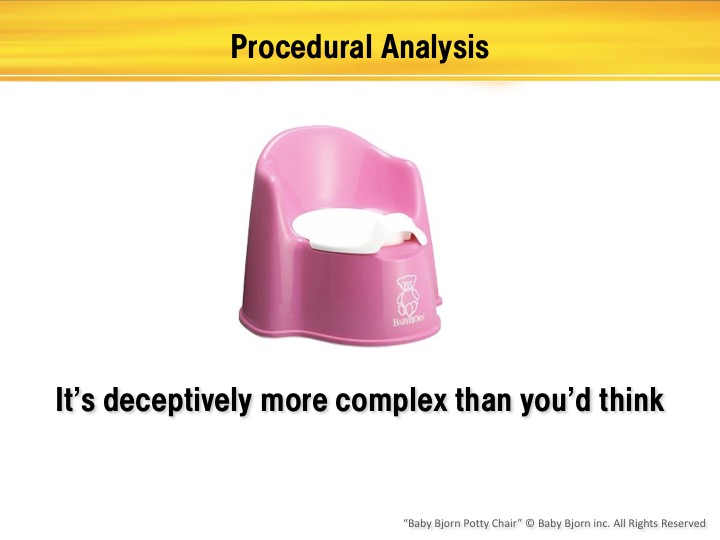
- What is the context, audience, and purpose of the overall presentation? Context: In-class college presentation. Audience: College age adults. Purpose: Describe principles of procedural analysis as part of a training development program.
- What is the singular message in this one slide? “Things that appear to be simple aren’t as simple once you examine them more closely.”
- What is the rhetorical strategy you are employing in the visual element? The use of the potty chair is a logical metaphor intended to show that even simple tasks aren’t simple to someone who has never done it before or who is still in the process of learning.
Non-examples of Visual Rhetoric
The examples below are not very well executed for reasons described below each item.
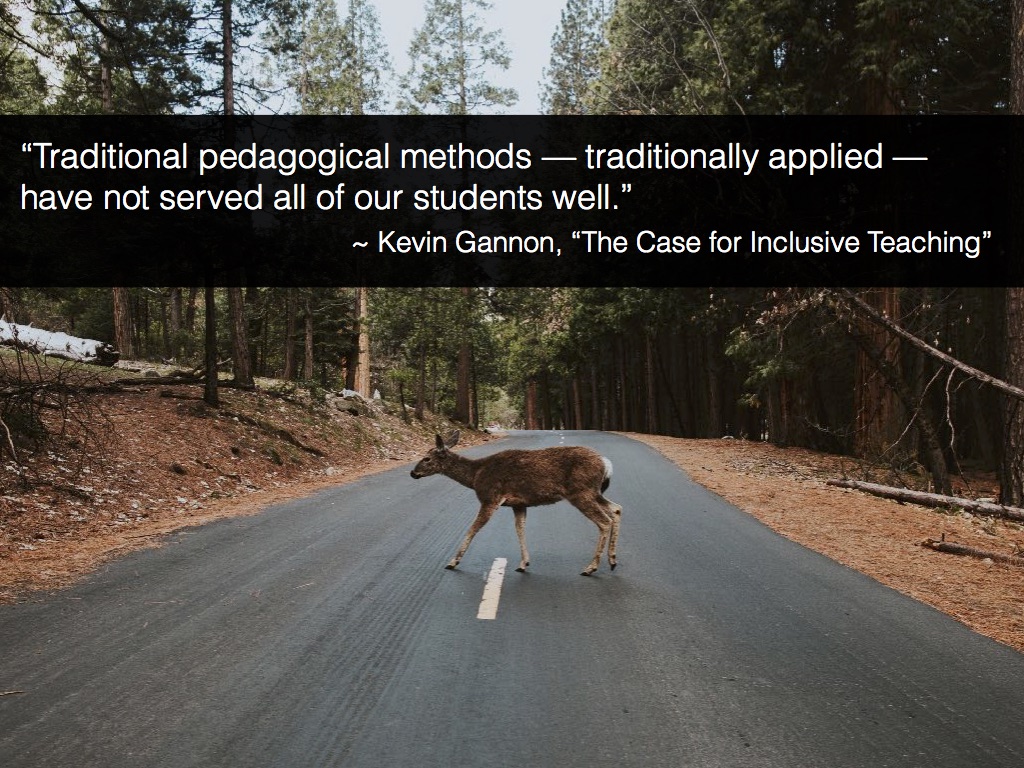
The example above was taken from a slide presentation about new ideas for assessing college student work more inclusively. The presenter was able to speak to the audience about the meaning of the quote, but the image used in this slide doesn’t seem to connect to the context, purpose, or audience.
It is a nice picture, but the audience will be perplexed about what the deer crossing the road has to do with inclusive assessment. By using this somewhat non-sensical image, the audience may be distracted from the presenter’s message because they are trying to make the connection between the image, the message, and some kind of metaphor.
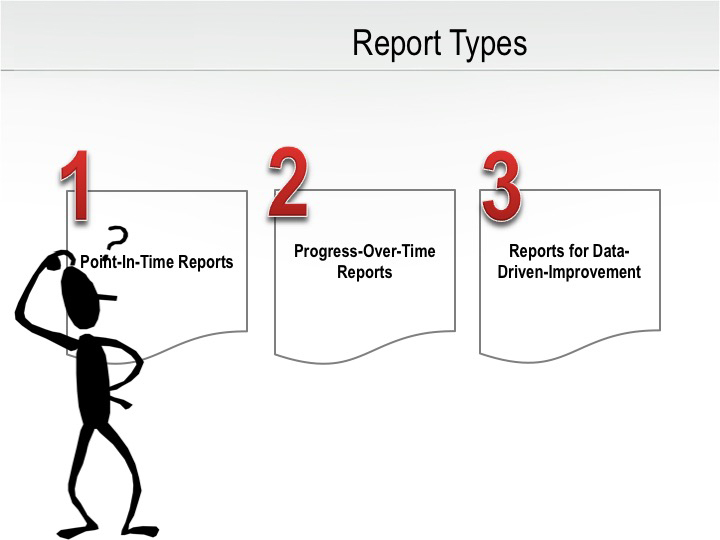
The example above was taken from a slide presentation about a software system that generates reports for educational program evaluation. The assumption here is that the presenter would explain what each of the three phases in the slide represent in the process so there isn’t any identifiable need for the “curious pod guy.” It doesn’t add anything meaningful to the narrative nor does the illustration punctuate how the information is to be taken as – it is just a decoration and mostly useless.

